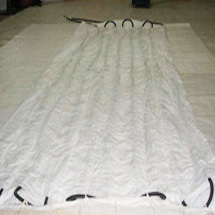Maximizing Efficiency with Heater Pads for Flexitanks
Maintaining the quality and consistency of your products during transit is paramount in bulk liquid transportation. Whether you’re shipping edible oils, chemicals, or food-grade liquids, temperature control can make all the difference in ensuring your cargo arrives in optimal condition. This is where Heater Pads for Flexitanks come into play, offering an essential solution for managing temperatures during transport.

What Are Heater Pads for Flexitanks?
Heater Pads for Flexitanks are specialized devices designed to maintain or raise the temperature of liquids stored in Flexitanks during transit. Flexitanks are large, flexible containers that fit inside standard shipping containers, allowing for the efficient transportation of bulk liquids. However, without proper temperature management, these liquids can suffer from temperature fluctuations that may affect their quality, consistency, or safety.
Heater Pads are typically installed at the bottom of the Flexitank and use electrical power to generate heat. This heat is then evenly distributed throughout the liquid, ensuring that it stays within the desired temperature range. This is particularly crucial for temperature-sensitive liquids that can solidify, become too viscous, or degrade when exposed to cold conditions.
Types of Liquids for Bulk Liquid Transport
- Edible Oils Transporting edible oils, especially in colder climates, presents a significant challenge. These oils can solidify at low temperatures, making offloading difficult and time-consuming. It plays a crucial role in preventing this solidification by maintaining a steady temperature throughout the journey. This ensures that the oils remain in a liquid state, allowing for smooth and efficient offloading upon arrival.
- Chemical Products Many chemical products are highly sensitive to temperature changes. Exposure to low temperatures can cause chemical reactions, leading to degradation or even the production of hazardous by-products. Using heater pads helps maintain the necessary temperature for these chemicals, preventing any adverse reactions and ensuring that they arrive safely and in their intended state.
- Food and Beverage Products In the food and beverage industry, consistency and quality are everything. Products like syrups, juices, and other food-grade liquids need to be kept at specific temperatures to preserve their flavor, texture, and safety. Heater pads ensure that these products are transported in ideal conditions, preventing spoilage and maintaining the high standards required in the industry.
Key Benefits of Using Heater Pads
- Efficient Temperature Management The primary benefit of using Heater Pads for Flexitanks is their ability to provide consistent heat, ensuring that your products remain at the optimal temperature throughout the journey. This is especially important in avoiding issues like solidification or changes in viscosity that can complicate offloading and handling.
- Cost-Effectiveness Heater Pads offer a cost-effective solution compared to more expensive temperature-controlled containers. By using Heater Pads, you can avoid the high costs associated with refrigerated transport while still maintaining the necessary temperature for your liquids. It helps to save on your overall shipping expenses.
- Easy Installation and Use One of the advantages of heater pads is their ease of installation and operation. These pads are designed to be user-friendly, allowing for quick setup and reliable performance. This simplicity reduces the need for specialized training or additional equipment, making them a practical choice for businesses of all sizes.
- Enhanced Product Safety Finally, it enhance the safety of your products during transport. By maintaining the correct temperature, you minimize the risk of temperature-induced damage or contamination. This ensures compliance with industry regulations and protects your reputation as a reliable supplier.
How to Choose the Right Heater Pads
When selecting Heater Pads for your Flexitanks, it’s essential to consider the type of liquid being transported and the specific temperature requirements. Consulting with an experienced supplier like Fluid Flexitank can help you determine the best solution for your needs, ensuring that your products are transported safely and efficiently.
In conclusion, Heater Pads for Flexitanks are an invaluable tool in the bulk liquid transport industry. They offer a reliable, cost-effective solution for maintaining the quality and integrity of temperature-sensitive liquids, helping businesses to deliver their products in perfect condition, every time.






